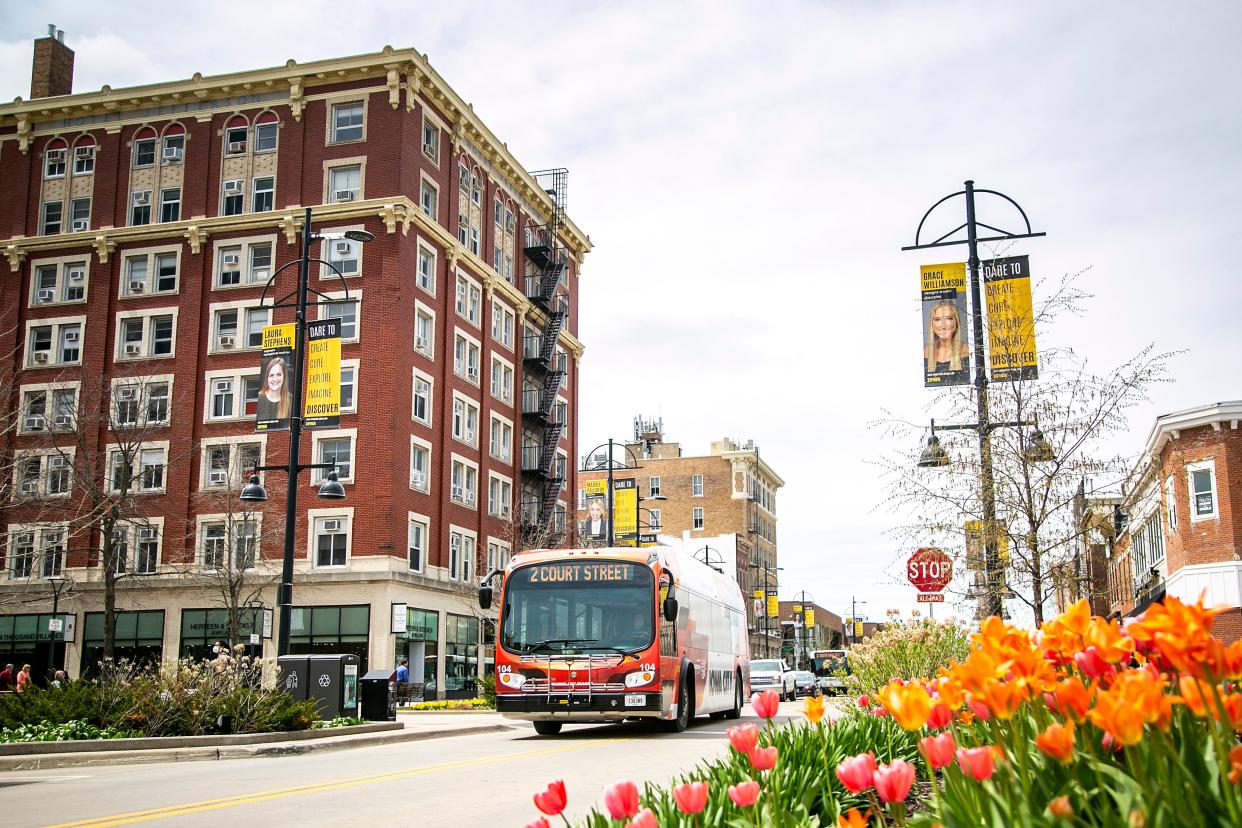Iowa City’s fare-free transit program boasts 44% ridership increase in first 3 months

Fare-free ridership is up, big.
Iowa City Transit's passenger traffic grew by 44 percent between August and October compared to 2022, which amounts to more than 135,000 additional rides. The uptick is thanks to the city's fare-free transit initiative, aimed at decreasing carbon emissions and increasing transportation equity in Iowa City.
The two-year pilot program launched on Aug. 1, providing Iowa City Transit riders with entirely free access at nearly 100 stops.
“It will hopefully help boost the local economy by keeping dollars in people's pockets,” Iowa City Councilor Andrew Dunn said during the council’s June 6 meeting where they authorized the move to fare-free. “In doing that, it is going to help the poor and working people save money and spend it on other necessities.”
City staff estimates that fare-free ridership has contributed to a 98-ton decrease in local CO2 emissions from personal vehicles. That reduction is equivalent to 250,000 miles driven by an average gas-powered vehicle, according to the Environmental Protection Agency's emissions calculator.
Through September, the city's Towncrest service line ? serving east Iowa City ? and the South Iowa City and Oakcrest lines ? which takes passengers to and from the southwest side of town ? have experienced the biggest impact. The Towncrest line saw an increase of more than 8,000 riders in the program's first two months and posted an 81% increase in the first month of fare-free.
Paratransit also witnessed an increase through September, with a 23% uptick in ridership on the Johnson County SEATS program. SEATS provides older and disabled riders and riders who do not live around one of the city's bus lines with transportation. Riders traveling from point to point in Iowa City can take advantage of SEATS for free.
More: University of Iowa's student government tackles drink spiking through Nightcap initiative
More: County's SEATS program offering free rides in Iowa City
City staff expects public transportation popularity to increase
Iowa City continues to study the program's effects on ridership, which is expected to increase by 20% to 60%, Iowa City transportation director Darian Nagle-Gamm told the council in May.
A grant from the U.S. Department of Transportation funds the program through July 2025, but the city remains hopeful to continue the program beyond that date.
The goal is to double ridership to further the city’s emissions targets and reduce vehicle trips by 55%, the city said in June. Fare-free aims to reduce carbon emissions by 45% in the next seven years to help the city achieve its goal of net zero emissions by 2050.

How do I catch a ride on the fare-free routes?
Anyone looking to ride an Iowa City bus line can simply jump aboard at any of the stops throughout Iowa City.
Each line uses a system similar to the Campus, the University of Iowa's free transit service, and counts riders via a tablet as they board for federal grant purposes. Fare boxes are still on each bus, but they are covered.
More: All Aboard: Iowa City's fare-free transit launches
Iowa City buses move along 13 lines, each originating from the downtown transportation hub. The city offers an interactive route map overlayed on a city map. Riders can also download the Transit app to find the route closest to them.
Full schedules are also available at icgov.org/busschedules. For those needing assistance, help can be found by calling 319-356-5151 or by emailing [email protected].
Coralville's bus routes also operate in parts of west Iowa City and make stops downtown, though those rides require a small fee.
Ryan Hansen covers local government and crime for the Press-Citizen. He can be reached at [email protected] or on X, formerly known as Twitter, @ryanhansen01.
This article originally appeared on Iowa City Press-Citizen: Iowa City gains significant ridership increase through fare-free program
